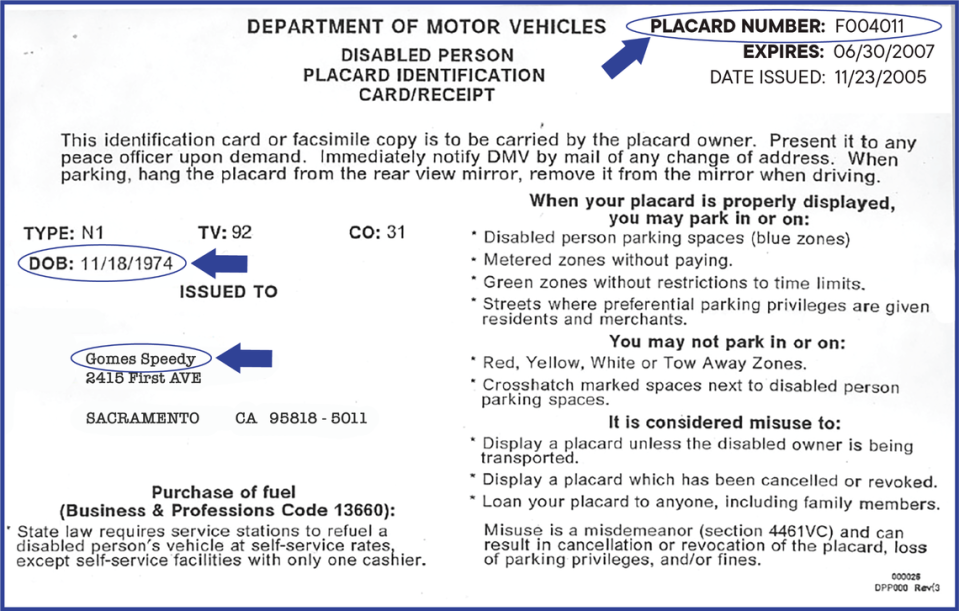California DMV is cracking down on disabled parking fraud. How a new rule is meant to help
Starting June 30, the process of renewing permanent disabled parking placards in California will change in an effort to crack down on fraudulent usage across the state.
Holders will be required to sign a form, issued by the California Department of Motor Vehicles, to verify they’re still alive and in need of a tag once every six years. Folks who received their original permanent disabled person parking placard before January 2019 are part of the first renewal cycle, according to the California DMV.
Disabled license plates and placards give certain parking privileges to disabled people and veterans as well as transportation organizations that serve those individuals.
While both grant the same advantages, placards can be moved from one vehicle to another.
“People are creative and people perhaps misuse the program,” said Steve Gordon, director of the California Department of Motor Vehicles.
“As a result of that, SB 611 came along.”
Here’s what you need to know about the current permanent disabled person parking placard law in California and how it will change in a couple of weeks, plus why the law was reevaluated:
The current law on disabled parking renewal in California
The existing law, Senate Bill 611, first passed in October 2017, authorizes the California DMV to automatically renew placards once every two years at the end of June.
To qualify for a placard, you must submit a certificate of disability by a physician and surgeon or a specified medical professional. The California DMV will then run a random annual audit to verify the paperwork.
Once a year, the California DMV compares its records to the records of the California Department of Public Health’s vital statistics and withholds renewed placards if someone is dead, but “it’s not a perfect match,” Gordon said.
There are no limits to the number of temporary placards the department can issue to those temporarily or permanently disabled if one is lost or stolen.
What the new disabled parking renewal law means for Californians
This year and for the first time, SB 611 will require holders to submit a free renewal form to the California DMV once every six years.
Similar to the existing law, the upcoming change won’t require recertification of eligibility or even proof of the applicant’s “true” full name.
To verify holders, the California DMV will compare its placard records against the Social Security Administration’s master files of social security numbers. People will be limited to four substitute placards within a two-year renewal period.
If you need more tags, you will have to reapply for a new one and submit a new certificate verifying your disability.
How to renew your California disabled placard
Those part of the first renewal cycle should sign for a new placard ahead of June 30, the expiration date of the current plaque.
You do not need to go into a DMV office. Instead, do on one of the following:
▪ Sign and return the mailed renewal notice to the DMV (postage is required)
▪ Complete the renewal form online with your current disabled person placard ID card
▪ Renew online with the QR code printed on the mailed renewal notice


About 2 million people in the state are part of the first renewal cycle, according to the California DMV.
Roughly 1.3 million people verified and placards were mailed to them and another 100,000 people renewed in person at a DMV office, Gordon said. About 700,000 people or one-third of the community have not signed a renewal form for a new card.
The biggest obstacle with the updated law is knowing exactly where to send new placards because people frequently change their address, he said.
If you moved, you can update your address when you sign the renewal form.
I signed for a new disabled placard. Now what?
Your new permanent disabled person parking placard will be mailed to you once the DMV receives your signature, according to its website.
Those who renew online will receive a new card within 10 days.
What do you want to know about life in Sacramento? Ask our service journalism team your top-of-mind questions in the module below or email servicejournalists@sacbee.com.

